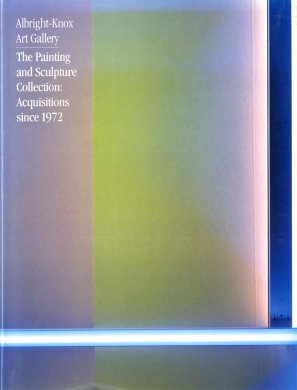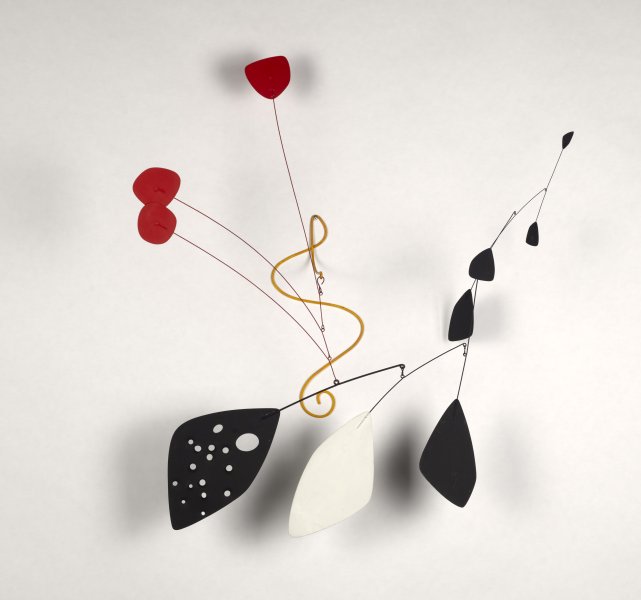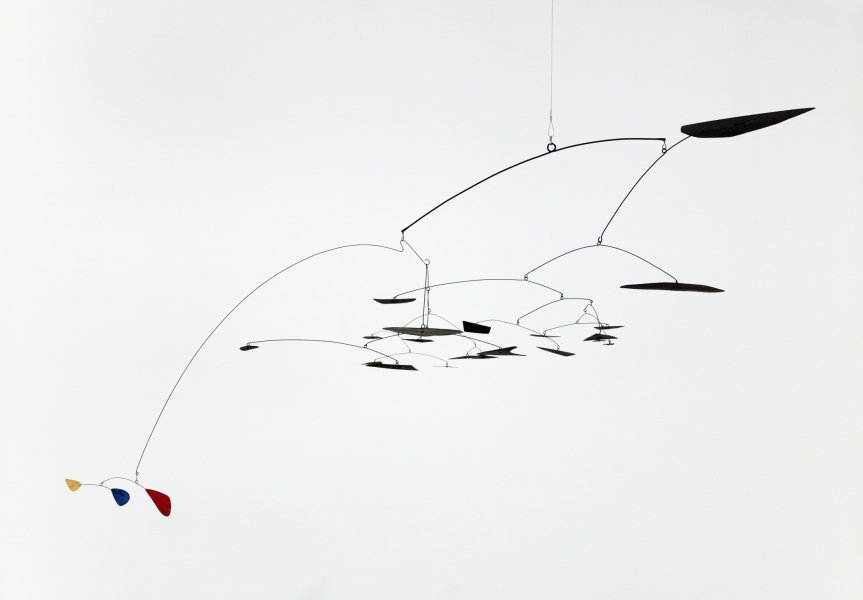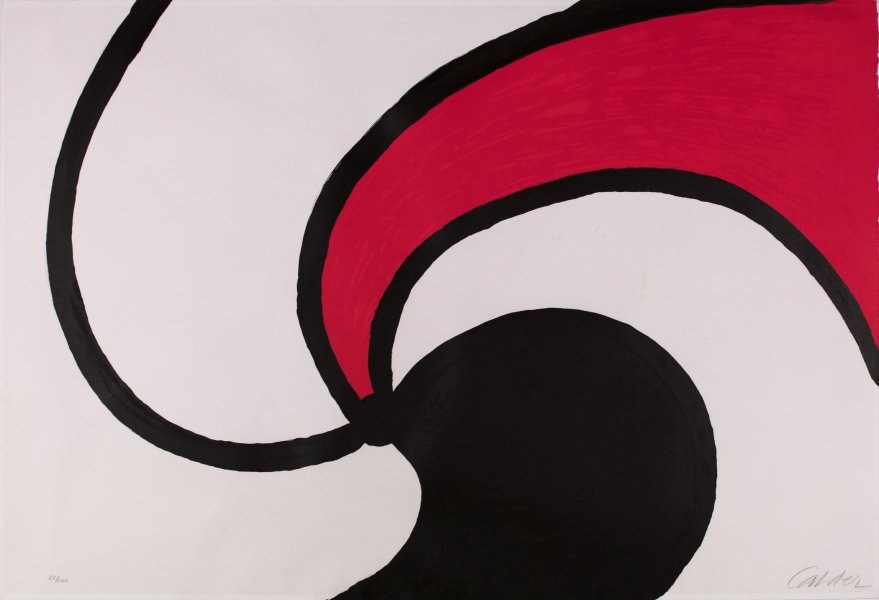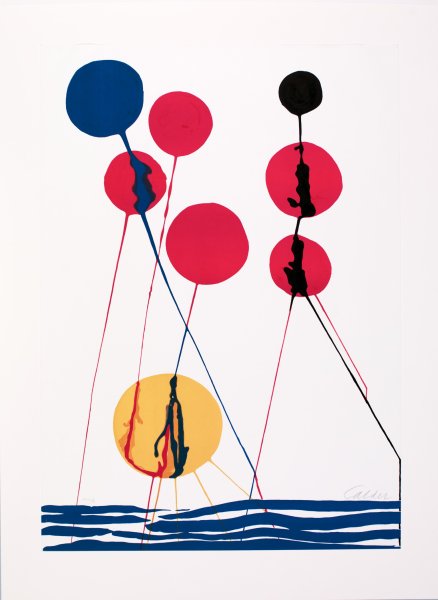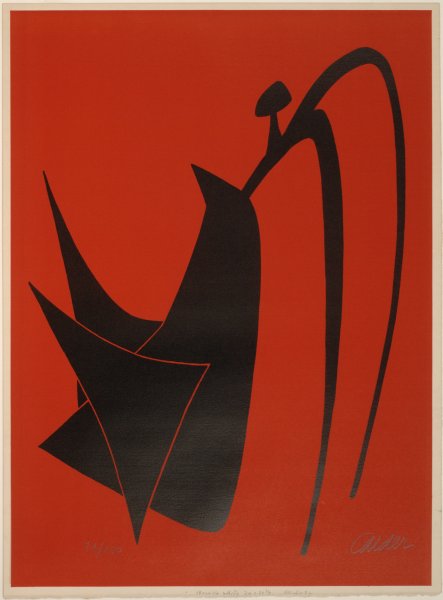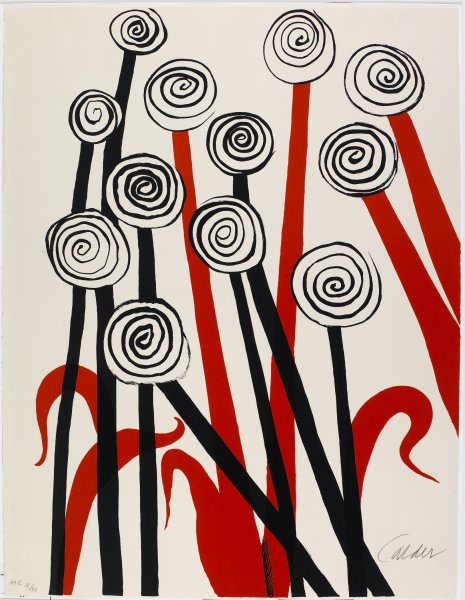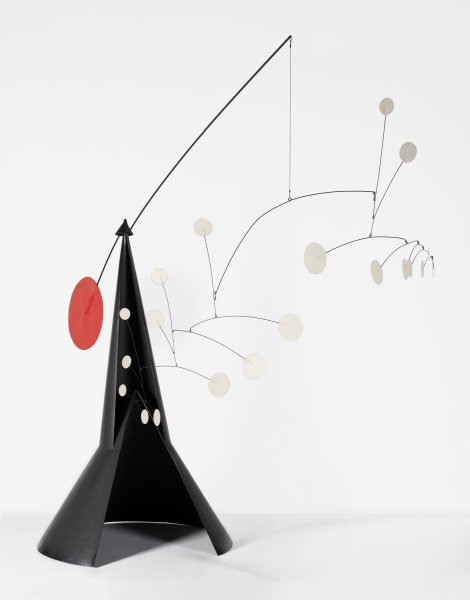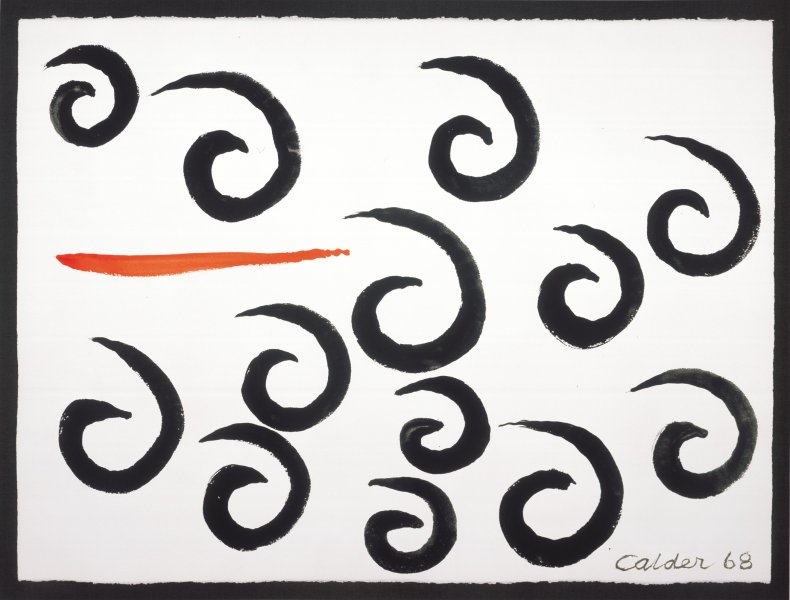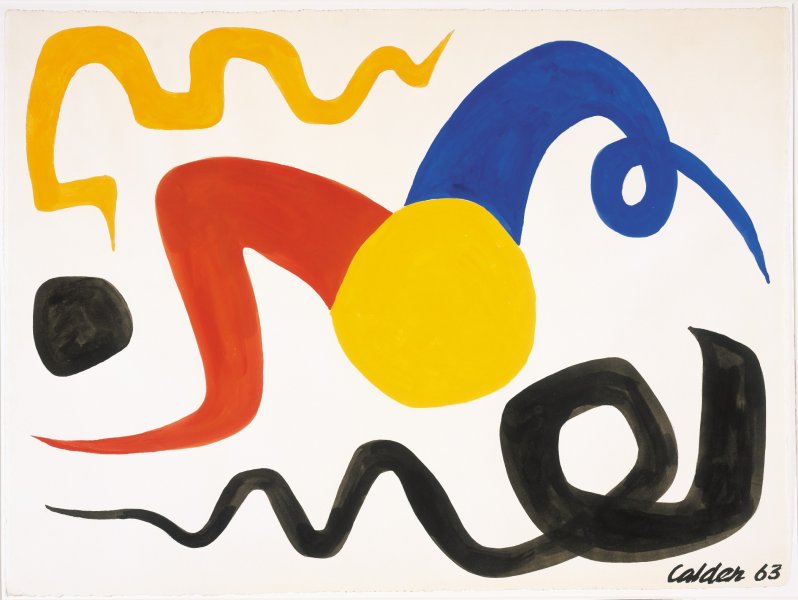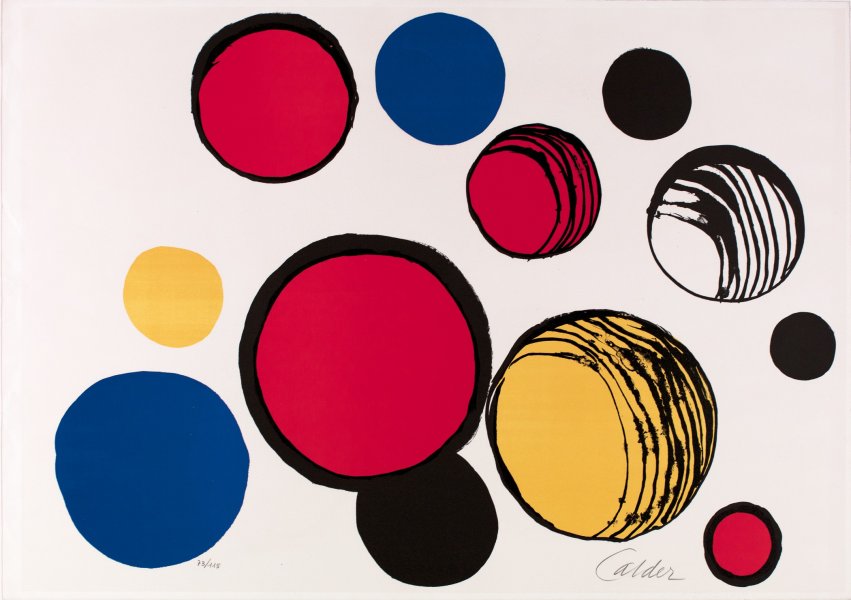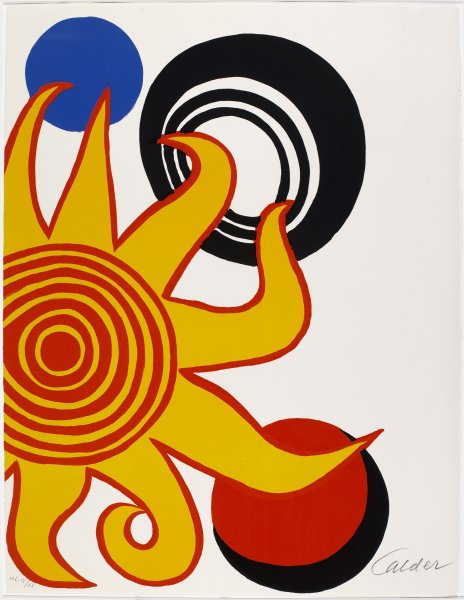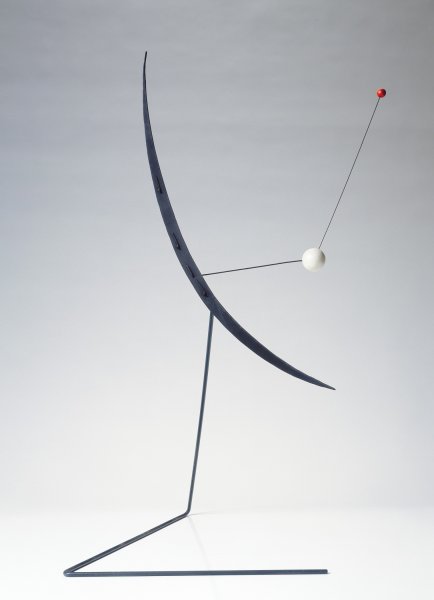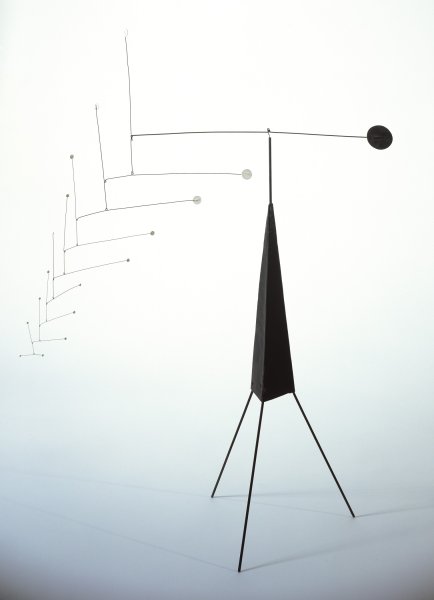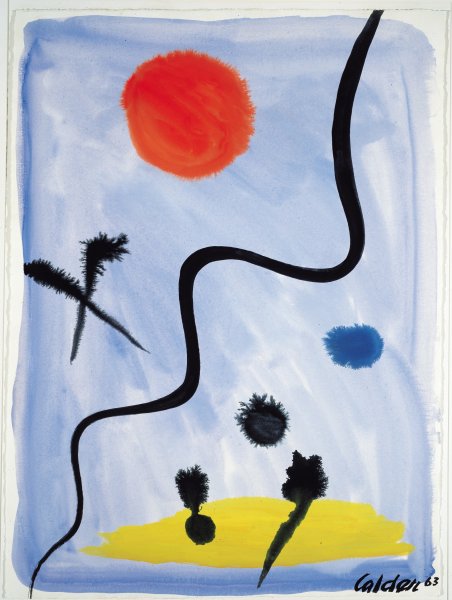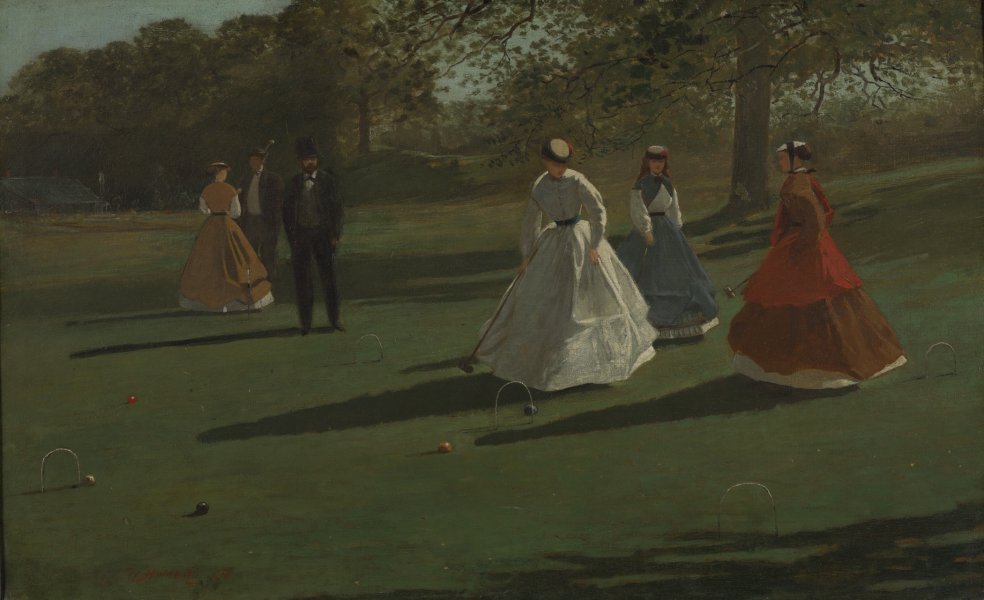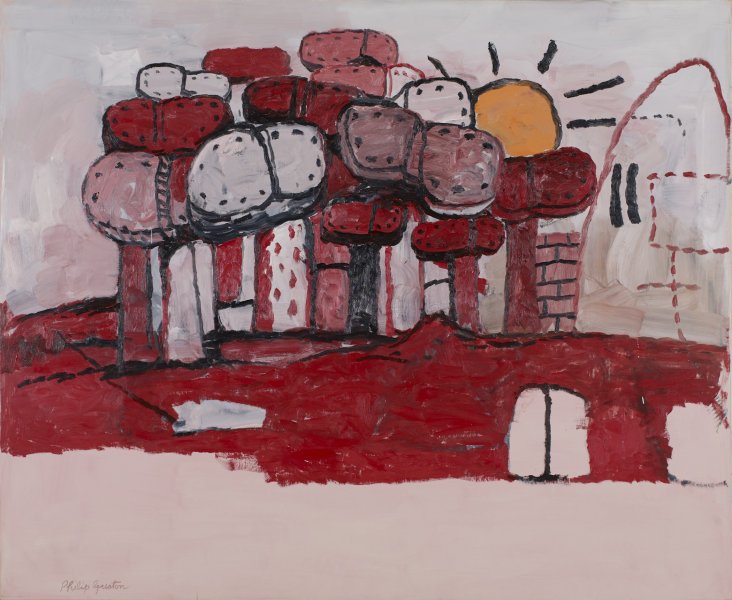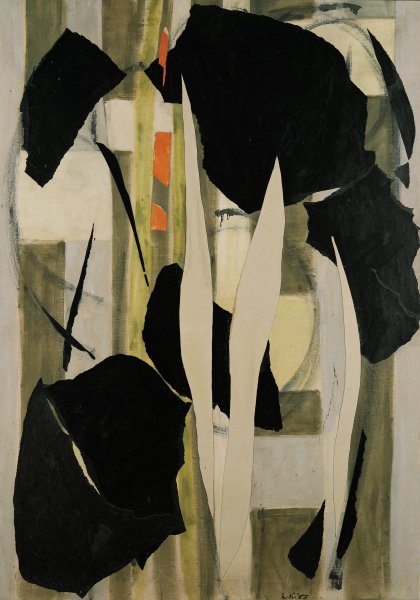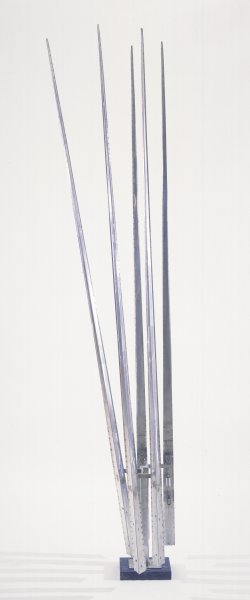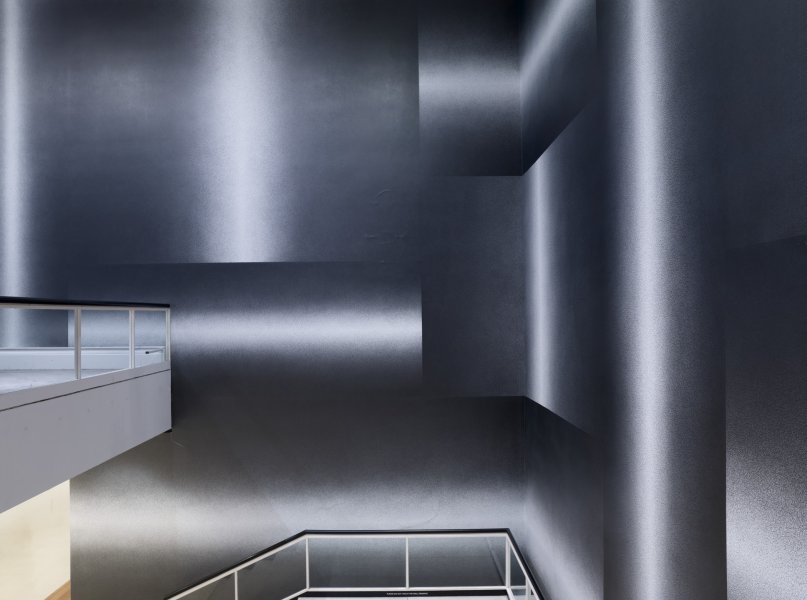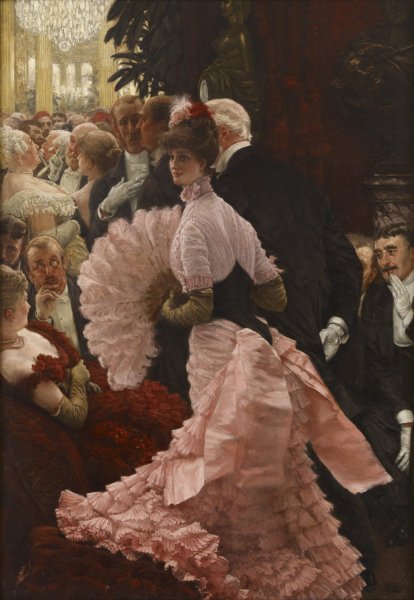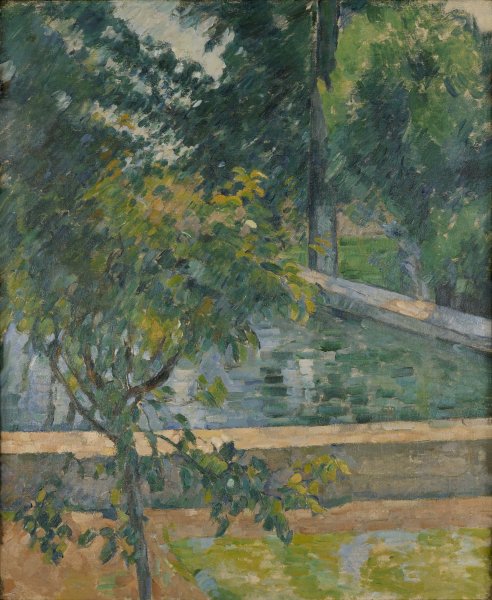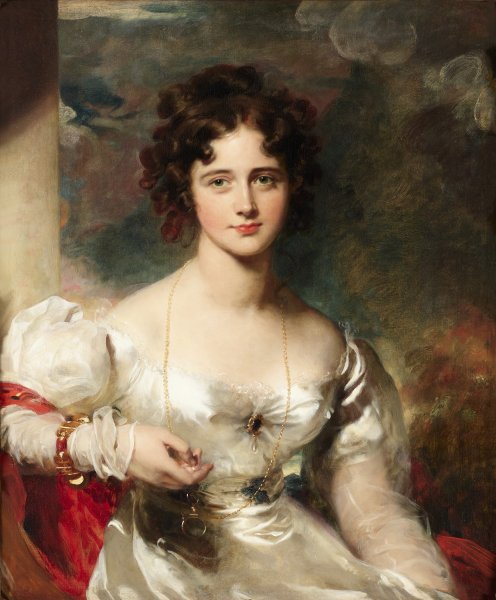Alexander Calder
American, 1898-1976
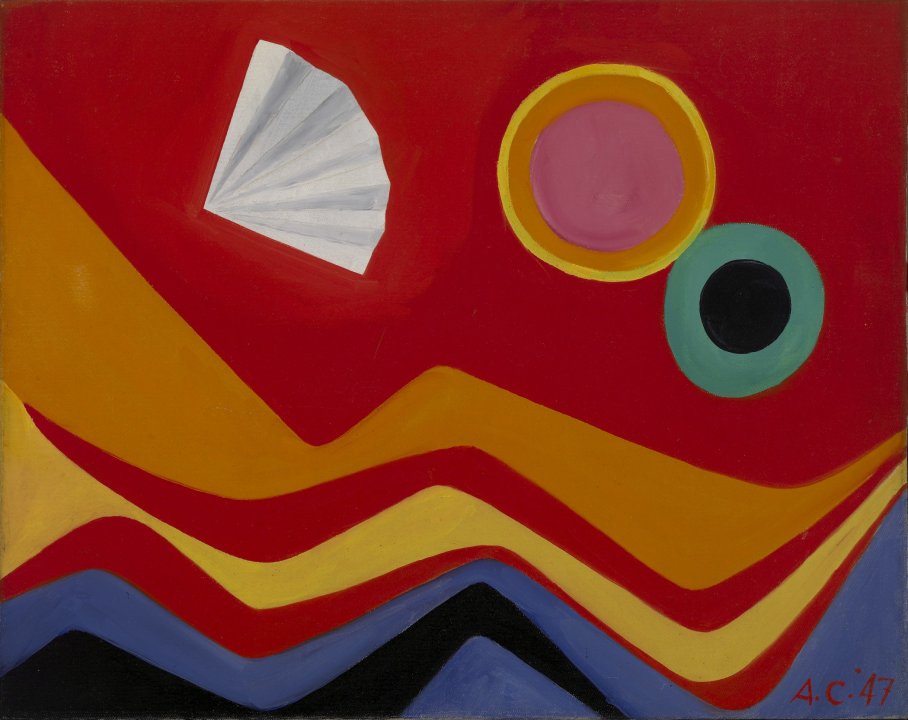
Untitled, 1947
Artwork Details
Materials
oil on canvas
Measurements
support: 16 1/4 x 20 1/4 inches (41.27 x 51.43 cm)
Collection Buffalo AKG Art Museum
Credit
Gift of Mr. and Mrs. Gordon Bunshaft, 1975
Accession ID
1975:19
Alexander Calder began painting early in his career while still attending The Art Students League of New York. His first paintings were representational, often depicting scenes of city life, but he began to approach painting in a more abstract manner after moving to Paris in 1926. Like Joan Miró, with whom he formed a lifelong friendship, Calder had an inclination toward organic shapes; he was no doubt influenced by Miró’s inventive biomorphic forms. This untitled work reads as a landscape, with wavy mountain shapes in the lower half of the canvas and round sun- or planet-like shapes in the upper-right quadrant. The fan shape in the upper left appears to be simply an imaginative addition. Images such as these appear often in Calder’s work after 1930. The imagery could perhaps be attributed to a period in 1922 when he worked his way to the West Coast as a sailor—he later fondly recalled seeing “the beginning of a fiery red sunrise and the moon looking like a silver coin on the other” during this time. Calder eventually abandoned oil paint in favor of the water-based gouache because it allowed for a much more spontaneous approach to painting.
Label from Artists in Depth: Arp, Miró, Calder, March 25, 2011–April 15, 2012
